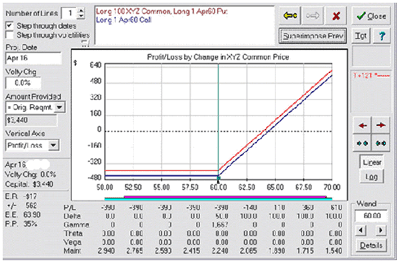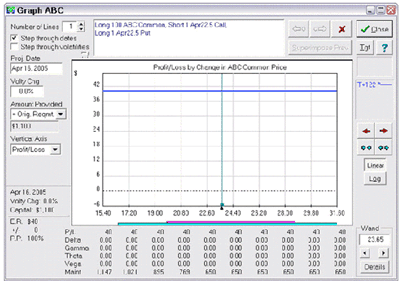Put/call parity is one of the foundations for option pricing, and while it does not typically produce trading opportunities for most traders, understanding this principle can help traders better analyze the markets, says Jim Graham of Investopedia.com.
An important principle in options pricing is called put/call parity. It says that the value of a call option, at one strike price, implies a certain fair value for the corresponding put, and vice versa.
The argument for this pricing relationship relies on the arbitrage opportunity that results if there is divergence between the value of calls and puts with the same strike price and expiration date.
Arbitragers would step in to make profitable, risk-free trades until the departure from put/call parity is eliminated. Knowing how these trades work can give you a better feel for how put options, call options, and the underlying stocks are all interrelated.
Adjustments for American-Style Options
This relationship
is strictly for European-style options, but the concept also applies to
American-style options, adjusting for dividends and interest rates. If the
dividend increases, the puts expiring after the ex-dividend date will rise in
value, while the calls will decrease by a similar amount. Changes in interest
rates have the opposite effects. Rising interest rates increase call values and
decrease put values.
The Synthetic Position
Option arbitrage strategies
involve what are called synthetic positions. All of the basic positions in an
underlying stock, or its options, have a synthetic equivalent. What this means
is that the risk profile (the possible profit or loss) of any position can be
exactly duplicated with other, more complex strategies.
The rule for creating synthetics is that the strike price and expiration date of the calls and puts must be identical. For creating synthetics with both the underlying stock and its options, the number of shares of stock must equal the number of shares represented by the options.
To illustrate a synthetic strategy, let's look at a fairly simple option position, the long call. When you buy a call, your loss is limited to the premium paid while the possible gain is unlimited. Now, consider the simultaneous purchase of a long put and 100 shares of the underlying stock. Once again, your loss is limited to the premium paid for the put, and your profit potential is unlimited if the stock price goes up.
Below is a graph that compares these two different trades.
If the two trades appear identical, that's because they are. While the trade that includes the stock position requires considerably more capital, the possible profit and loss of a long put/long stock position is nearly identical to owning a call option with the same strike and expiration. That's why a long put/long stock position is often called a "synthetic long call."
In fact, the only difference between the two lines above is the dividend that is paid during the holding period of the trade. The owner of the stock would receive that additional amount, but the owner of a long call option would not.
NEXT PAGE: Arbitrage Using Conversion and Reversals
|pagebreak|Arbitrage Using Conversion and Reversals
We can use this
idea of the synthetic position to explain two of the most common arbitrage
strategies: the conversion and the reverse conversion (often called a reversal).
The reasoning behind using synthetic strategies for arbitrage is that since the
risks and rewards are the same, a position and its equivalent synthetic should
be priced the same.
A conversion involves buying the underlying stock while simultaneously buying a put and selling a call. (The long put/short call position is also known as a synthetic short stock position.)
For a reverse conversion, you short the underlying stock while simultaneously selling a put and buying a call (a synthetic long stock position). As long as the call and put have the same strike price and expiration date, a synthetic short/long stock position will have the same profit/loss potential as shorting/owning 100 shares of stock (ignoring dividends and transaction costs).
Remember, these trades guarantee a profit with no risk only if prices have moved out of alignment, and the put/call parity is being violated. If you placed these trades when prices are not out of alignment, all you would be doing is locking in a guaranteed loss.
The figure below shows the possible profit/loss of a conversion trade when the put/call parity is slightly out of line.
This trade illustrates the basis of arbitrage: buy low and sell high for a small, but fixed, profit. As the gain comes from the price difference between a call and an identical put, once the trade is placed, it doesn't matter what happens to the price of the stock.
Because they basically offer the opportunity for free money, these types of trades are rarely available. When they do appear, the window of opportunity lasts for only a short time (i.e. seconds or minutes). That's why they tend to be executed primarily by market makers, or floor traders, who can spot these rare opportunities quickly and do the transaction in seconds (with very low transaction costs).
Conclusion
Put/call parity is one of the foundations for
option pricing, explaining why the price of one option can't move very far
without the price of the corresponding options changing as well. So, if the
parity is violated, an opportunity for arbitrage exists.
Arbitrage strategies are not a useful source of profits for the average trader, but knowing how synthetic relationships work can help you understand options while providing you with strategies to add to your options-trading toolbox.
By Jim Graham, Contributor, Investopedia.com























